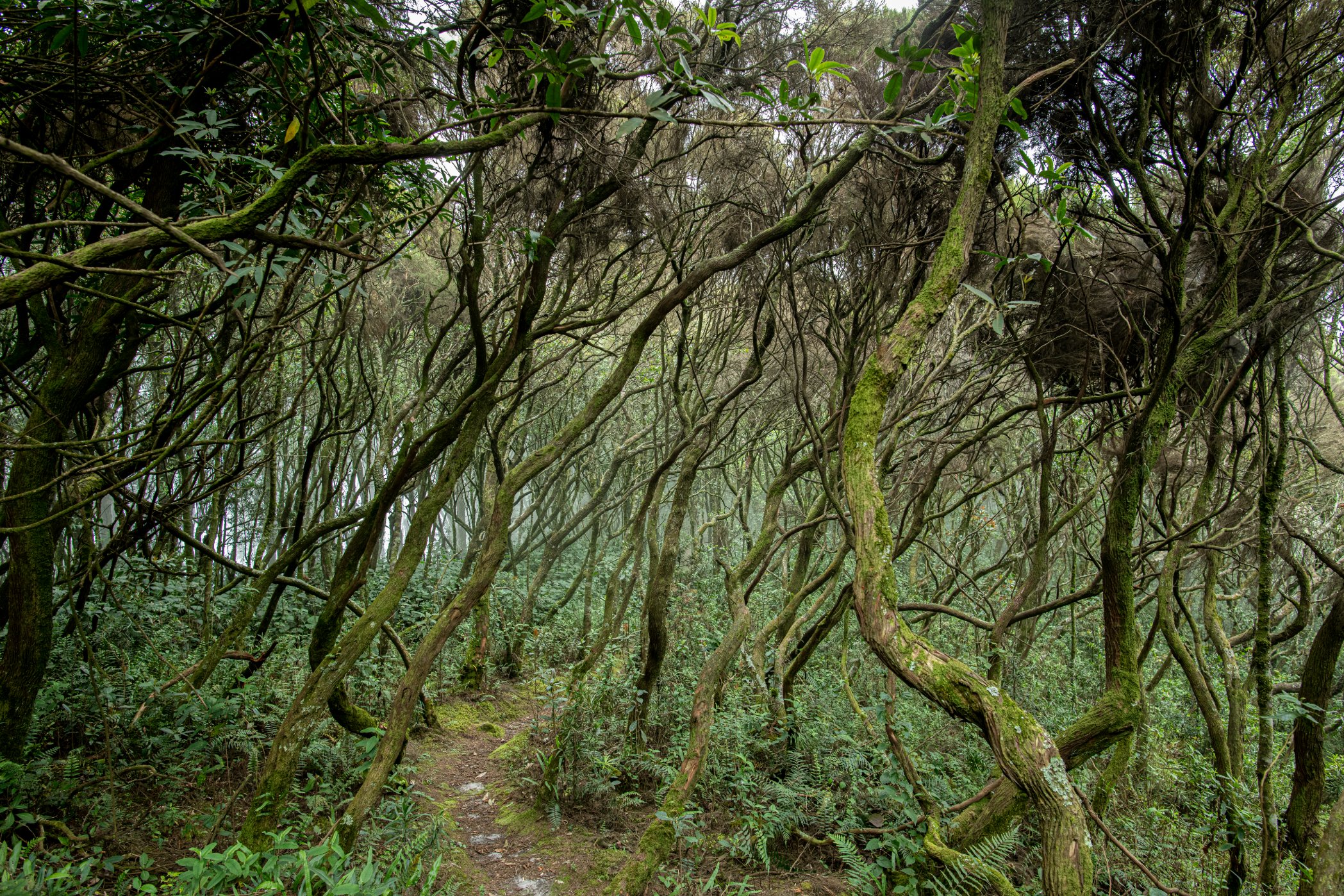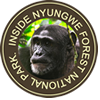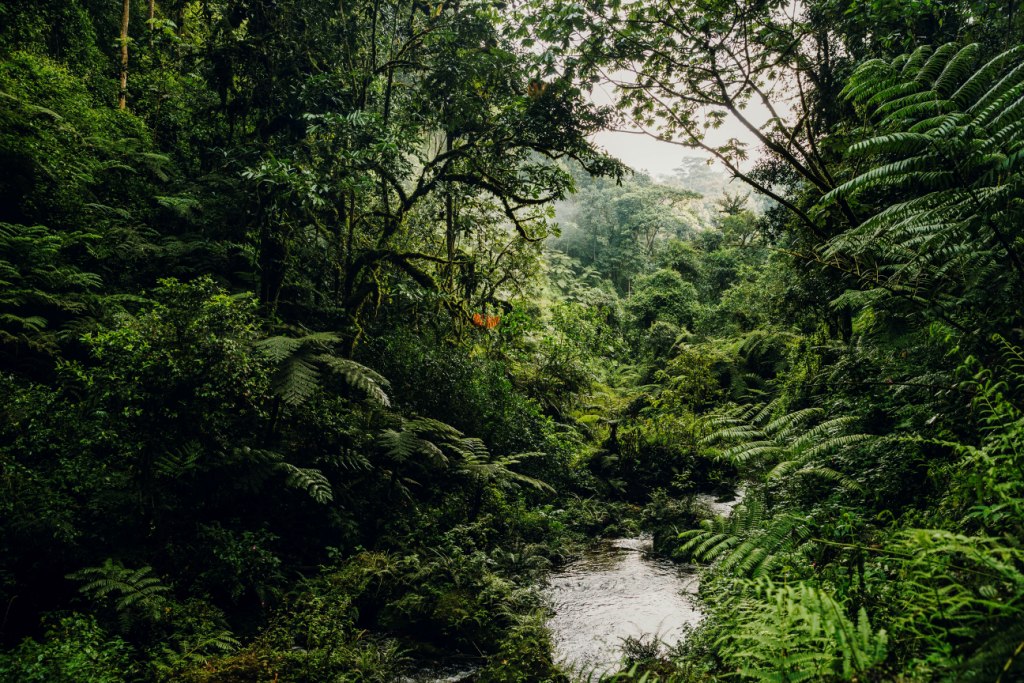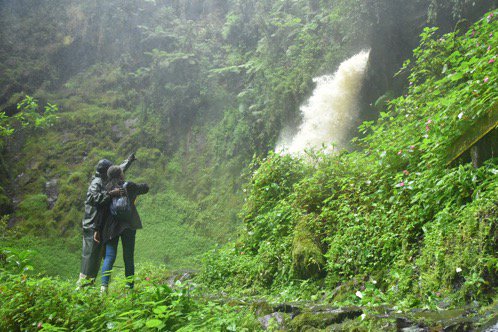
Nyungwe Biodiversity
Nyungwe Biodiversity is very rich and extends on over 101,900 hectares, Nyungwe is the second largest Protected Area in Rwanda (after Akagera National Park) and this also makes it the largest remaining tract of rainforest in the country. This verdant National Park is also popular for protecting one of Africa’s rarest species that include the Albertine Rift endemics.
Nyungwe is nestled within the southwestern side of Rwanda, within the western Great Rift Valley Area that extends from Lake Albert to Lake Tanganyika. This National Park, gazetted in 2004 borders Burundi, the Democratic Republic of Congo, and Lake Kivu. Interestingly, this Protected Area feeds two Rivers- the Nile and Congo, which are surprisingly two of the World’s renowned longest Rivers and these provide an incredible portion (at least 70%) of Rwanda’s freshwater. Book Now
When you talk of Nyungwe, expect an extraordinarily rich diversity that includes;
Plant Species
While Nyungwe Forest National Park comprises the entirety of the rainforest, there are also natural patches of savannah throughout the Park thus providing an even higher diversity of species. These species are distributed in different ranges of altitude between 1900 and 3000 meters above sea level thus indicating a change in vegetation from tall trees and ferns to Bamboo. This Biodiversity hot spot is home to over 1068 plant species and of these 200 are tree species while 140 are orchids. The remarkable landscape has greatly contributed to the extreme level of endemism among the flora with more endemic species in this Park than in any other Forest within the region. There are 21 of 24 species endemic to the Albertine Rift region here, and these include Begonia pulcherrima, Impatiens kagamei, and Impatiens nyungwensis.
Wildlife
Several studies within Nyungwe Forest National Park discovered over 96 mammal species, of which 16 species are endemics, 13 are primate species that include common chimpanzees, Hamlyn’s monkeys, L’Hoests monkeys, Rwenzori Colobus, and others. Other mammals here include 63 rodents and bats. Of these mammals, 11 species were categorized as threatened by the IUCN, and 5 species are near-threatened.
There are also about 30 Amphibian and Reptile species, as well as over 120 species of butterflies.
Bird species
birds are part of Nyungwe biodiversity. The verdant Nyungwe Forest National Park is a fantastic Birder’s Paradise comprising more than 300 bird species that include about 30 Albertine Rift Endemics, 13 species that have been classified as near-threatened, endangered, or vulnerable by the IUCN. Nyungwe’s dense vegetation sometimes makes it challenging to find the feathered beauties during your birding tours but during guided walks, there are chances of sighting the exceptional Grauer’s swamp warblers, the Rwenzori Turaco, Handsome spurfowl, the Blue-headed sunbirds, Dusky Crimsonwing, Yellow-eyed black flycatcher, Regal sunbirds, Stripe-breasted Tit, Purple-breasted sunbirds, Dwarf honeyguide, Red-faced woodland warblers, Rwenzori batis, Black-faced Apalis, Red-throated Alethe, Neumann’s warblers, Grauer’s Broadbills, and many others.
When is the perfect time to visit Nyungwe biodiversity?
The best time to visit Nyungwe Forest is during the dry months-June to September and December to February when precipitation/rainfall levels are low and the forest trails are drier/less slippery/less muddy and wonderful for explorers. While during the rainy season (March to May and October to November), the weather is mild, there are wonderful chances of spotting lots of wildlife species. However, Nyungwe Forest is a dense rainforest, meaning the chances of receiving rain during the dry season is also high hence it is important to be prepared at all times. Always carry hiking boots, a rain jacket, long-sleeved shirts, safari pants in khaki, a backpack, a safari hat, and gardening gloves, in addition to a good camera, a pair of binoculars, drinking water, energy-giving snacks, insect repellant, and many others.
Cross off your bucket list and visit Rwanda this year for a chance to explore more than what you expect from a wildlife safari in Akagera to a meeting with the mountain gorillas or taking a hike to Dian Fossey’s grave, this is a great moment to achieve in life.



